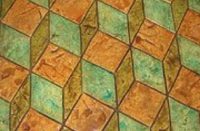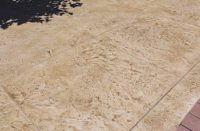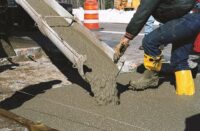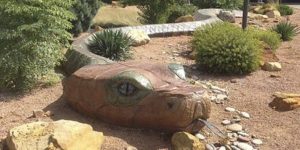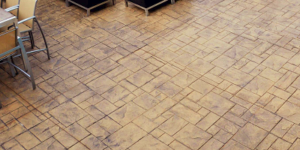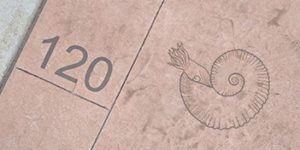
In the hills of Southern Indiana lies a massive steel and concrete structure steeped in history. The Viaduct — also known locally as the Tulip Trestle, the Richland Creek Viaduct, the Green County Viaduct and officially, Bridge X75-6, according to Bloomingpedia — was once the largest railroad trestle in the United States. At 2,295 feet long (a bit under a half mile) and 157 feet high, it lies on a stretch of track between Solsberry and Tulip. Even from a distance, Tulip Trestle is an impressive sight to see.
According to long-time Solsberry resident and history buff Larry Shute, terrain clearing for the trestle began in summer 1905. The Indianapolis Southern Railroad, with “quiet” financial support from the Illinois Central Railroad, hired 50 teams of horses for $3.50 per day, and the drivers/handlers were paid a daily wage of $1.50. Common laborers earned 13 cents per hour, while more skilled laborers, mostly Italian immigrants, were paid 30 cents per hour to erect the steel — those wages were considered above average for the times. The work could be dangerous, Shute notes, and several men are reported to have died during construction.
The entire cost of the project, which was completed in December 1906, was $246,504. In today’s economy, a Chicago bridge engineer estimates, the cost to build this type of bridge would be more like $20 million. More than a century later, the Tulip Trestle is still open for business and is now owned by Indiana Railroad.
When Shute learned of plans to erect a platform for viewing the trestle, he jumped at the chance to help. The viewing platform had been in the planning stages since 2011, but progress was slow and seemed to be at a standstill. In November 2014, the Tulip Trestle Community Restoration (TTCR) board asked Shute to solicit community support for the project. So Shute and his friend Mike Lindsey, also of Solsberry, went into high gear and quickly obtained volunteers and donations. Within two months of being approached, they had secured all the funds and labor needed to make the trestle observation platform a reality.
“Solsberry is a very tight-knit community. We often come together as a town to help our neighbors with work they need done. From building wheelchair ramps for a local man, to pouring a concrete slab for the local volunteer fire department, the community always pitches in,” says Shute. “Local citizens and businesses, and even some from outside the area, were happy to help us out with the trestle project.”
Instead of the planned wooden structure, which would have required continuous maintenance and possibly been the target of vandals due to its remote location, Lindsey envisioned a stamped concrete structure. Little wonder, since he is a long-time concrete stamper who knows the benefits and possibilities that decorative concrete provides.
For the platform, he chose a pattern simulating weathered planks. That way, the structure would blend with its rustic setting while being extremely durable and nearly maintenance-free. To make the project truly unique, Lindsey and a friend collaborated to fabricate a custom concrete stamp which depicted No. 1504, the last steam locomotive to cross the trestle. This stamp was placed in the center of the platform.

Built on donated land with donated materials, the base of the platform sits on a hillside overlooking the trestle. The concrete block base was filled with compacted stone in preparation for pouring. On a perfect Saturday morning in June, a group of concrete finishers and laborers came together to install the platform. They were joined by TTCR board members, a volunteer grill cook, photographers and an assortment of interested onlookers.
Amid stories, joking and camaraderie reminiscent of an old-time barn-raising, the slab was placed. The field was colored with Walnut dry shake color hardener and a custom blend of powdered antiquing releases, and stamped with Butterfield Color’s Gilpin’s Falls Bridge Plank stamps. When the concrete had set sufficiently, the outside forms were stripped and the edges were stamped to mimic the end grain of aged timbers. For the safety of visitors, powder-coated railings were installed around the platform.
A concrete entrance ramp was finally placed in late July and was stamped with customized stamps resembling a railroad track, complete with rails, timbers and spikes. Unusually rainy weather had slowed the completion of the project, which also involved acid staining these components and sealing the ramp with a solvent acrylic sealer.
A storyboard detailing the trestle’s history will be erected atop a concrete base covered with vertical overlayment and textured to resemble a tree trunk. Inclement weather has also impeded this part of the project’s progress.
The Tulip Trestle observation deck, a prime example of community involvement and volunteerism in the Midwest, is sure to serve as a lasting monument to Indiana’s railroad history. For the 72-year-old Shute, the project hits a little closer to home. “I now feel that I have given something back to the community and believe that I have lived a very satisfying and productive life here in Solsberry, Indiana,” he says.
Other Indianapolis Decorative Concrete Featured by Concrete Decor
Melvin and Bren Simon Cancer Center, IUPUI
Auburn Cord Duesenberg Automobile Museum, Auburn, Indiana
Children’s Museum of Indianapolis
Castleton Square Mall, Indianapolis
Tilt-Up Buidling: 620 N Delaware St.
Hoosier Patriot Memorial, Washington Park East Cemetery
